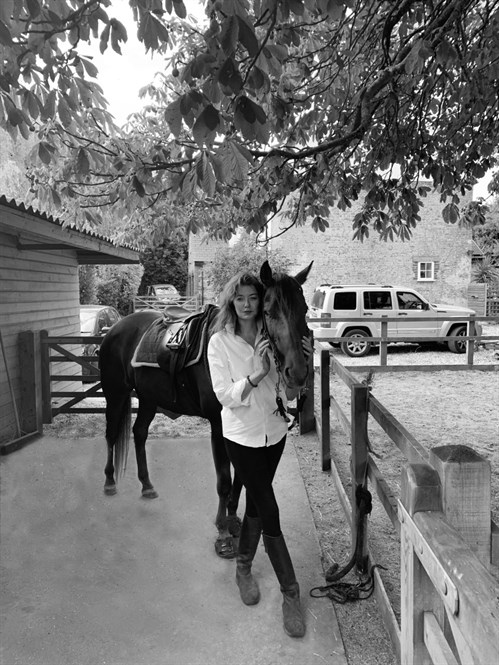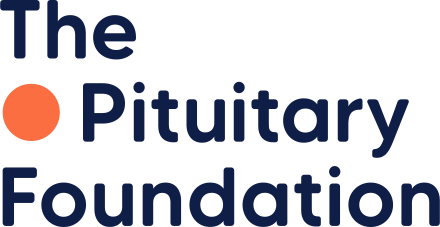Bernadette Fallon
After a lifetime of unexplained health problems, a horse may have saved Lucy Sewill’s life

Living with Cushing’s, a condition that causes over-production of the stress hormone cortisol, is difficult. But difficulty is nothing new for Lucy Sewill, celebrity photographer and horsewoman, who struggled with crippling health problems all through childhood and into adult life.
Born prematurely, she spent a long time in an incubator before she was allowed to go home. At 12 she was struck with a heart infection which severely damaged her heart and caused a stroke, resulting in several months in hospital.
“That had a massive effect on me,” she explains. “I had to learn to walk again. And nobody knew why it had happened. It was just very unusual.”
Despite her complicated health history, she went on to overcome her setbacks and led a very active life. After school she became an international endurance rider, racing horses over long distances, and was shortlisted for the British team.
“I never told anybody at the time about all of the things that had happened when I was younger, I just wanted to do everything on my own merit. Then I got married, had three children – but there was always something not quite right.”
She continued to have repeated infections, saw doctors frequently for various reasons and had so many surgeries she’s now lost count. Each issue was treated as a separate case she says, nobody ever looked at the full picture. But clearly her immune system was damaged.
After she gave birth to her third child, things escalated. Her blood pressure shot up and she was given a blood pressure monitor to use at home, though became convinced it had stopped working.
“I remember ringing up the doctor and saying, I don’t think this works, I can’t get a reading, it just goes up to the top and then says ‘error’.”
With blood pressure levels that were dangerously off the scale, she ended up in A&E. And then, out of the blue, things suddenly fell into place.
“Animals have always been incredibly important to me and I’ve had horses all my life. And horses get Cushing’s. It’s quite common in horses in fact, just incredibly rare in people. The horse that I was competing with got Cushing’s and she died. And I remember looking this up and researching it, thinking that sounds like me, that sounds like what I’ve got. Cushing’s in horses and humans have some different symptoms but they are certainly relatable illnesses.”
She went to her GP, who was also a horse owner, and explained her theory. Sympathetic but not convinced, it took several visits for Lucy to persuade the doctor to take her concerns seriously and run the tests.
“I was convinced I had it, I was bruised all over, I had many of the symptoms. And it’s a long process of testing to get to a diagnosis but eventually the final result came back and it was positive.”
Lucy took the news in her stride, thinking that once the tumour causing the problems was removed, everything would be fine and she could get on with the rest of her life. But the medical team forced her to look at the reality of her situation.
“I remember my consultant saying you’ve got to appreciate this is a devasting condition and me thinking I’ve no idea what you’re talking about. But actually, now, I think they were just trying to get me to take it seriously. Because I was doing a big project at the time and I was looking at my diary saying, oh can we just squeeze in this surgery.”
That project was one of the biggest jobs of her career, an international music photography commission that would see her photographing the likes of Phil Collins, Joan Armatrading, Bob Geldof and Ray Davies. So, there was really no sense of relief at the diagnosis, she explains.
“I was irritated and annoyed actually because it was just something else messing up my life. It was a really big project and I’d been waiting for this for a long time. So yes, the timing was bad.”
But she held to her guns and completed the project. She took the photos, attended the book launch and the week after the launch went into hospital for her pituitary surgery. It kept her going she explains.
“Because out of everything that’s happened to me, my work and my creativity has been the thing that has been massively sustaining throughout”.
Unfortunately, the surgery didn’t work. While a substantial part of Lucy’s pituitary gland was removed, the tumour wasn’t. Three weeks after pituitary surgery she was back in theatre again, this time having her adrenal glands removed. Now she went from one extreme to the other – from having Cushing’s and producing too much cortisol to having Addison’s Disease and not producing any at all.
“Addison’s is equally life threatening but it’s easier to deal with. I’ve just suddenly entered a whole new world – reluctantly, I must say but this is still better than having Cushing’s.”
Lucy follows an ongoing drug regime, self-administering cortisol every three days from a pump. Not having adrenal glands, she’s constantly on the watch for an adrenal crisis – which can be stimulated by anything from a physical injury to excess stress – and constantly carries medication to manage this.
Practical changes to her life include having to take needles and drugs with her everywhere she goes, which can be tricky when flying. But normal life still continues, and she lives in the countryside with her husband and children and beloved horses. And she hasn’t let her condition get in the way of anything she wants to do. With a career that’s seen her photograph everybody from David Cameron to Terry Wogan to Boris Johnson, she’s certainly not winding things down.
“I haven’t modified the way I work, and I haven’t modified the way I live and I’m just not going to. I want to do everything, and I still do everything. I ride my horse, I’m very active. I go all over the world to take pictures and I travel by myself. Some people might not do that because they wouldn’t feel safe, but I have to, because it makes me feel like myself.
And while she admits there have definitely been times when she’s felt quite vulnerable, as time goes on those feelings of vulnerability have lessened.
“Now I do everything that comes my way – I’m not going to sit around and not do stuff. My illness has had to fit in with my life.”
Her advice to anyone going through a similar diagnosis is to research as much as you can – “because all that knowledge is power”.
“It’s your body and you know it better than anyone else. Be an advocate for your own health.”
She explains it’s okay to be really sad and to grieve for what you’ve lost, urging people not to feel they have to put a brave face on it. Because putting a brave face on it is not going to help you. Instead, find a way to explore all of that grief. And be prepared for the reaction you will get from others – not all of it supportive, she reveals.
“I found this personally very interesting. Some friends I just didn’t see after I got the diagnosis – others I became very close to. I was very surprised that some of the people who I thought would be there for me, just weren’t. But that wasn’t about me, that’s about them so if that happens to you don’t blame yourself for it, they’ve just got their own issues.”
She advises finding a few people that you can be yourself with and talk to – whether that’s through a group or individual friends.
“And it is difficult, it’s really difficult but you just keep going. And that’s all you can do. Find something that harnesses your energy. For me it’s the creativity and it’s going out on my horse. I’ve got things that are very precious and important to me still. Don’t let go of those things. Do everything you can.”
“Just put one foot in front of the other and one day you will look behind and realise how far you’ve come.”







